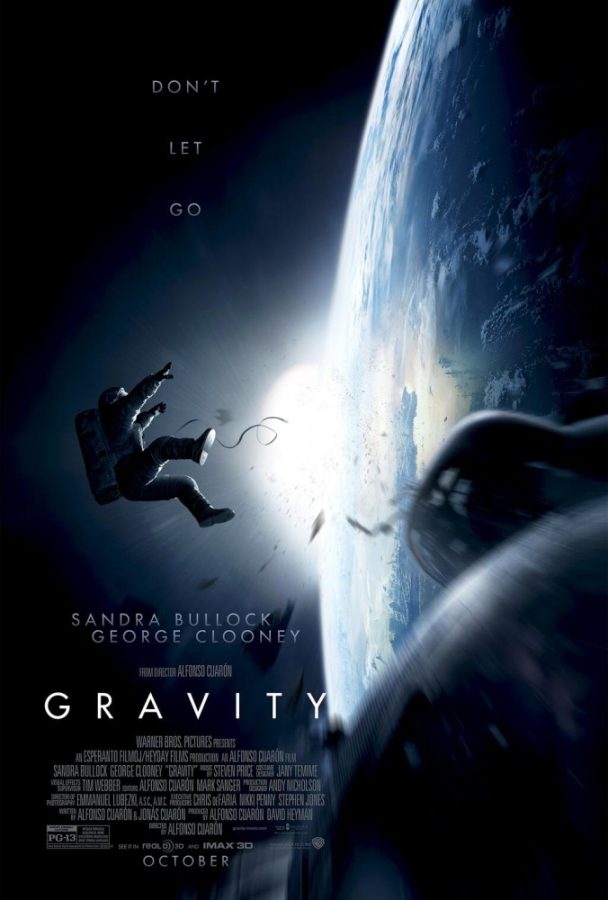“Gravity” is one of the most visually stunning films in recent memory — to just say “this year” would be a disservice. Movies like “Gravity” are what the big screen is made for.
The film sets the stage with biomedical engineer Dr. Ryan Stone (Sandra Bullock) and veteran astronaut Matt Kowalski (George Clooney) on a space shuttle mission for the last servicing of the Hubble Space Telescope. This is Stone’s first space shuttle mission — and Kowalski’s last. During the final spacewalk on the Hubble, mission control tells them that debris is headed in their direction. Kowalski and Stone are not able to get back inside the shuttle before the colossal chunks of debris come streaking in. The shuttle is destroyed, and the two must try to find a way back to Earth.
The plot is a stark one, boiled down to the most basic elements of conflict. This is succinctly stated in an opening-credits screen that ends with the concise statement: “Life in space is impossible.” Stone and Kowalski must survive against a variety of elemental threats, including oxygen depletion, being crushed by gargantuan debris and being incinerated by the atmosphere. This classic story of man versus nature is situated in the perfect setting: the bleakness of space. There is not a single other living soul out there in the void, and Stone and Kowalski can’t last long.
The visuals and sounds are the cornerstones of the film, and director Alfonso Cuarón (“Harry Potter and the Prisoner of Azkaban,” “Children of Men”) maintains an element of reality by having no sound in space. For example, when the space shuttle is bombarded and erupts in a cascade of smithereens, one would expect concussive sound, but there is no cacophony of explosions or grating of metal colliding with metal. Apart from the soundtrack and the distressed talking between the characters over their comm systems, the scene plays out in complete silence. This adherence to realism juxtaposes the film’s visuals and audio in a way that turns the brain on end.
Finally, because there are only two actors maximum on the screen at any time, a sense of infinite loneliness permeates the film. Being suspended in space, thousands of miles away from Earth, is a chilling reality. Although there is plenty of action, the quiet, still moments are some of the most memorable.
For example, one of the most the profound images in the film is an astronaut drifting out into space, completely untethered. A human helplessly floating away into dark oblivion is a deeply disconcerting thing to behold, and it will stay with audiences long after they leave the theater.
Bullock carries most of the load in the movie, and does so in an extremely convincing fashion. Stone starts off unsure of herself and her surroundings, but gradually gains more and more confidence. Bullock relays the incredible terror of being helpless in space so well that the audience can fully feel it. Her performance runs the gamut of possible emotions, and barely ever missteps. For a film to rely solely on one performance, and for that performance to successfully see the film to its very end, is quite the feat. Clooney also contributes, providing a charismatic, assured and confident performance that contrasts well with Stone’s initially hesitant nature.
So while it may seem almost sinful to shell out cash to see corporate cinema while a local film festival is in full swing, “Gravity” quite simply shouldn’t be missed.
Grade: A
Follow Alex Guyton @TDWildcatFilm









